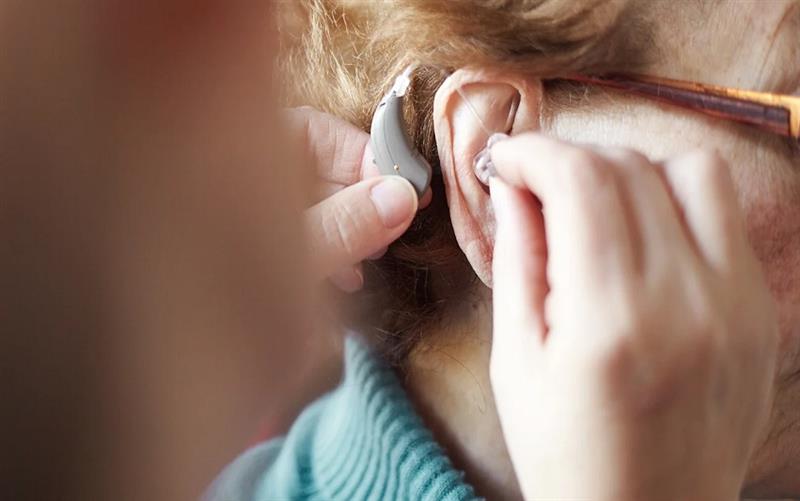
In recent years, the field of hearing aid technology has witnessed a profound revolution, leading to the development of advanced devices that offer superior sound quality and enhanced functionality. This revolution has transformed the way individuals with hearing loss experience the world around them, providing them with innovative solutions that significantly improve their quality of life.
The sound revolution in hearing aid technology has ushered in a new era of auditory empowerment, offering individuals with hearing loss unprecedented access to superior sound quality, connectivity, and personalized solutions. With advanced digital signal processing, wireless connectivity, artificial intelligence, sleek design, and remote programming capabilities, modern hearing aids are transforming lives and redefining what it means to hear the world around us. As technology continues to evolve, the future of hearing aids holds even greater promise, promising a world where everyone can experience the joy of clear and immersive sound.
1. Advanced Digital Signal Processing:
Central to the sound revolution in hearing aids is the advent of advanced digital signal processing (DSP) technologies. These technologies enable hearing aids to process incoming sounds with unparalleled precision, allowing for highly customized amplification and noise reduction strategies. By leveraging DSP, modern hearing aids can distinguish between speech and background noise, enhancing speech clarity while minimizing distractions—a crucial advancement for individuals navigating noisy environments.
2. Wireless Connectivity and Smartphone Integration:
Another groundbreaking development in the realm of hearing aids is the integration of wireless connectivity and smartphone compatibility. Many modern hearing aids are equipped with Bluetooth technology, enabling seamless connectivity with smartphones, tablets, and other digital devices. This integration empowers users to stream audio directly to their hearing aids, whether it be phone calls, music, or podcasts, enhancing their overall listening experience and connectivity in an increasingly digital world.
3. Artificial Intelligence and Machine Learning:
Artificial intelligence (AI) and machine learning algorithms have also revolutionized the capabilities of hearing aids. These intelligent systems can adapt and learn from user preferences and environments, continuously optimizing sound processing settings to deliver personalized and adaptive hearing solutions. AI-powered hearing aids can automatically adjust settings based on the user's listening preferences, environmental conditions, and even physiological factors, providing a truly tailored and immersive auditory experience.
4. Sleek and Discreet Design:
In addition to technological advancements, the design of modern hearing aids has undergone a transformation, with a focus on sleekness, comfort, and discretion. Gone are the days of bulky, conspicuous devices—today's hearing aids are often tiny, discreet, and available in a variety of styles to suit individual preferences. From completely-in-the-canal (CIC) models to discreet behind-the-ear (BTE) options, individuals can choose a hearing aid that seamlessly integrates into their lifestyle without compromising on performance or aesthetics.
5. Remote Programming and Teleaudiology:
Advancements in teleaudiology and remote programming have also revolutionized the way hearing aids are fitted and adjusted. With remote programming capabilities, audiologists can fine-tune hearing aids and make adjustments in real-time, eliminating the need for frequent in-person appointments. This remote accessibility not only improves convenience for users but also enables audiologists to provide more efficient and personalized care, ensuring optimal hearing outcomes for their patients.
6. Rechargeable Batteries:
Traditional hearing aids often relied on disposable batteries, which could be inconvenient and costly to replace regularly. However, many modern hearing aids feature rechargeable battery options, eliminating the need for disposable batteries and providing users with the convenience of simply placing their devices in a charging dock overnight.
7. Water-Resistant and Dust-Proof Designs:
With advancements in materials and engineering, many contemporary hearing aids are designed to be water-resistant and dust-proof. This durability ensures that users can confidently wear their hearing aids in various environments, including during physical activities or in challenging weather conditions.
8. Tinnitus Management:
Tinnitus, or ringing in the ears, can be a significant challenge for individuals with hearing loss. Some modern hearing aids incorporate specialized tinnitus management features, such as masking sounds or therapy programs, to help alleviate the symptoms of tinnitus and improve overall comfort for users.
9. Directional Microphones:
Directional microphones are a key feature of many modern hearing aids, allowing users to focus on sounds coming from a specific direction while reducing background noise from other directions. This directional focus enhances speech clarity, particularly in noisy environments, and improves the overall listening experience.
10. Feedback Suppression:
Feedback, or whistling noises, can occur in hearing aids due to sound leakage or improper fitting. Advanced feedback suppression technologies in modern hearing aids effectively mitigate feedback, ensuring a more comfortable and seamless listening experience for users.
11. Smartphone Apps and Control:
Many modern hearing aids come with companion smartphone apps that enable users to control various settings and functionalities directly from their smartphones. These apps often offer features such as volume adjustments, program selection, and even remote assistance from audiologists, enhancing user convenience and accessibility.
12. Telecoil Compatibility:
Telecoils, also known as T-coils, are small coils of wire built into some hearing aids that allow users to connect directly to compatible telephones, public address systems, and loop systems in public venues. Telecoil compatibility is a valuable feature for individuals with hearing loss, providing improved clarity and accessibility in various listening situations.
13. Customization and Personalization:
Modern hearing aids offer extensive customization options to cater to individual preferences and hearing needs. From adjustable sound processing settings to personalized fitting parameters, users can tailor their hearing aids to their unique auditory profiles, ensuring optimal comfort and performance.
It's ideal to keep yourself as educated with your hearing aids and a new breakthrough in the technology. Ask your query via Book an Appointment today. For more information visit https://hearing.careinc.ca or you can call us today at (403)605-6300